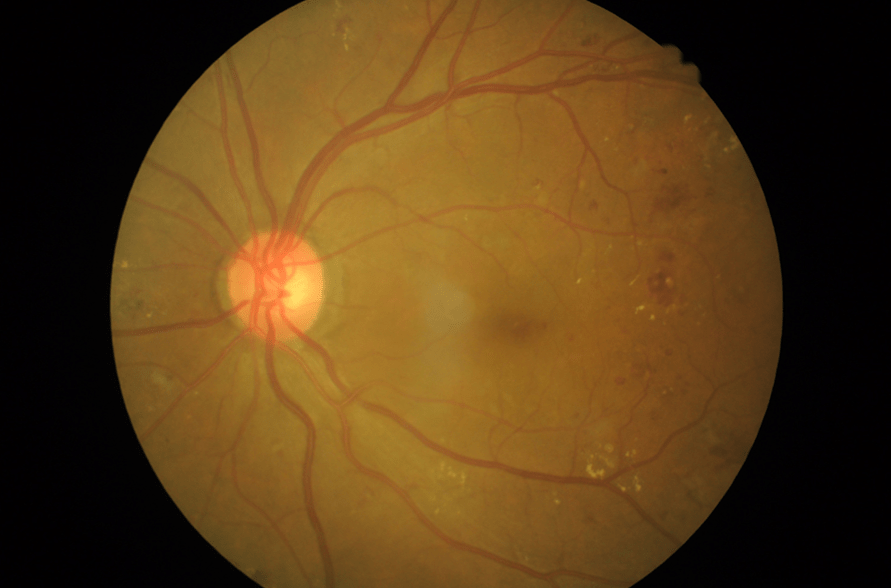
What diabetic retinopathy treatment looks like
Receiving a diagnosis of diabetic retinopathy (DR) can be a scary prospect for a person with diabetes mellitus. They may fear they will lose their vision suddenly or permanently, or that treatment will be intensive and costly. What they may not realize is that diabetic retinopathy is generally a slowly progressing disease with various stages – some that are vision-threatening, and others that are not.
“Most people get confused by the naming of the diagnosis,” said Dr. Stephen Russell, an ophthalmologist at University of Iowa Health Care. “The problem is that many different severity levels get lumped under the term ‘diabetic retinopathy.’ Most people don’t understand the subtleties of the diagnosis and how it relates to treatment.”
The stages of DR
A DR diagnosis covers a spectrum of stages, including mild, moderate, and severe nonproliferative diabetic retinopathy, which are characterized abnormalities in existing blood vessels such as microaneurysms, venous bleeding, and exudates.
The most advanced stage of DR is proliferative diabetic retinopathy (PDR) which is defined by the presence of new abnormal blood vessel growth in the retina which can lead to further bleeding, blockage of vision, and retinal traction or detachment. Patients with PDR are much more likely to present with vision deterioration or loss, in addition to having all or some of the features found in non-proliferative diabetic retinopathy.[i]
The majority of patients have DR at an earlier stage that does not require intervention but does require monitoring,” said Dr. Russell. “If a patient does have PDR, it is possible they may or may not have symptoms. If they do have symptoms, it is usually blurring of their vision, complete blockage of their vision, or large floating spots.”
While the early stages of DR may not be accompanied by symptoms, the disease is still detectable and is more easily treated if detected in those early stages. DR that reaches a more advanced stage may also be treated successfully; however, the longer the disease goes untreated, the more the damage done to the retina is irreversible.
This is why it is recommended that people with diabetes get their vision tested at least once a year, though fewer than 50% of patients actually follow this recommendation.[ii] If a patient does receive a DR diagnosis, there are several different treatment methods, depending on how advanced the disease is.
Treatments for DR
“It is important to understand that when a patient reaches the threshold for treatment, their vision will be better, and remain better, if they begin treatment promptly,” said Dr. Russell. “That is why monitoring for the earliest evidence of treatable diabetic retinopathy is the goal.”
In the earliest stages of DR, the most effective treatment is for the patient to better manage their diabetes though regulation of their blood glucose levels. When detected early, DR can usually be managed and controlled with proper diet and nutrition coupled with well controlled blood sugar and blood pressure levels.
As the disease progresses, treatment options may differ depending on patient-specific symptoms and the level of disease detected. In some cases, the eye will be injected with medication to help reduce swelling from leaking blood vessels and slow potential vision loss.
Another way to stop leaking blood vessels is through laser treatments. Focused laser beams are used to seal off small areas of retinal leakage within the eye. For proliferative diabetic retinopathy, lasers may be applied to the peripheral retina, away from the area of vision, to reduce the tendency for new growth of retinal blood vessels. This lowers the risk of bleeding, blockage, and retinal tractional development.
If the patient has evidence of blood vessels growing or bleeding within the center cavity of the eye, which is indicative of PDR, then decisions are made about whether the patient needs a different course of therapy or intervention requiring intraocular injections. In some cases, a surgery called vitrectomy may be required,” said Russell.
Vitrectomy is when an ophthalmologist removes vitreous gel and blood, as well as potential scar tissue from the inside of the eye to allow light rays to once again focus on the retina.[iii] This is typically accompanied by laser therapy to reduce future risks of bleeding and other complications.
“In most cases when treatment is administered it can prevent or improve visual acuity,” said Dr. Russell. “A very high percentage of patients improve substantially with intervention.”
Better outcomes through early detection of DR
“People with DR typically have a lot of other complications going on as well, so patients are often relieved to know we understand their specific complication, that there are treatments that are highly effective, and that they can be managed in a reasonable way,” said Dr. Russell.
While treatment for all levels of DR has the potential to be effective, early detection is perhaps the best defense patients have against DR related vision loss. An early diagnosis can help physicians work with patients to create their best personalized diabetes management plan.
References
[i] Facts About Diabetic Eye Disease [Internet]. National Eye Institute. U.S. Department of Health and Human Services; 2015 [cited 2019May17]. Available from: https://nei.nih.gov/health/diabetic/retinopathy
[ii] Sixty Percent of Americans with Diabetes Skip Annual Sight-Saving Exams [Internet]. American Academy of Ophthalmology. 2016 [cited 2019May17]. Available from: https://www.aao.org/newsroom/news-releases/detail/sixty-percent-americans-with-diabetes-skip-exams
[iii] Diabetic Retinopathy Treatment [Internet]. American Academy of Ophthalmology. 2018 [cited 2019May17]. Available from: https://www.aao.org/eye-health/diseases/diabetic-retinopathy-treatment